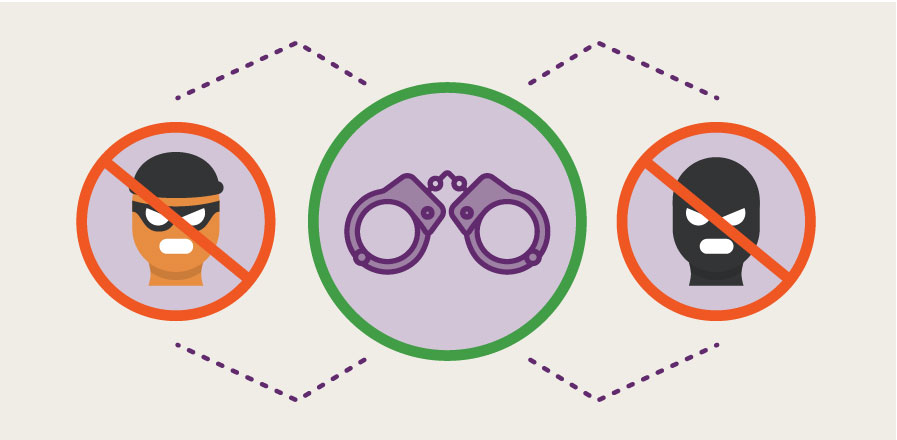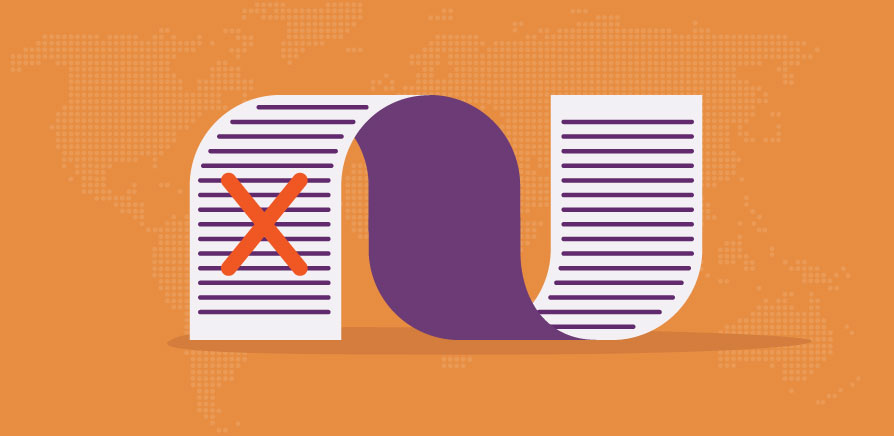
In our last lesson we discussed some of the basics of shipping packages internationally - documents, regulations, compliance, etc. Here, we'll take a closer look at your responsibilities as a shipper to give you a better idea of how to prevent them from interfering with your shipments.
Can I ship my items internationally? Compliance with Local Regulations
Just because a given item can legally be shipped domestically or to a given international destination, doesn't mean it's allowed in another country. As the sender, it's your responsibility to ensure that the contents of your package can legally enter the destination country.
Rules and regulations can vary widely from country to country, and there are some unique products that can be restricted or prohibited in certain locations. Russia, for example, won't allow boxes over a certain weight into the country. Sending food or chocolate as a gift to a loved one in Italy? Think again - Italy has an extremely restrictive import process on food and chocolates. The US strictly limits the quantity of textiles imported, and many other countries have similar regulations. Most of these rules are designed to protect the local economy.
There are a few things that can affect this, including local import laws, current embargoes, and the quantity and value of the items in the shipment. UPS and FedEx each offer tools to help you determine whether you can ship a given item to your intended destination or not.
What happens if I ship items that can't be imported?
When a shipment isn't allowed into the destination country, there are a few possibilities for what happens next. Sometimes you will have the option to have the package destroyed or abandoned, but that isn't always the case - at times, you will have to pay for its return. In some cases, the carrier will be able to remove the problematic items and proceed with the remainder of the shipment.
It's important to call your carrier as soon as possible so as to understand your options in that particular case. Remember, if it's ever necessary to have a package returned to its original location, the costs associated with that return are always the responsibility of the shipper rather than the receiver.
Countries you cannot ship to - Embargoed Countries
Some countries have been embargoed by either other countries or an international body, such as the United Nations. Canada provides a list of these countries for reference but to name a few, Iran, Iraq, Lebanon, North Korea are currently on the embargo list which means you cannot ship there.
If you attempt to ship to an embargoed country, there's a very good chance that your package won't make it out the door, as the carrier won't be able to print a shipping label to an invalid destination.
It's important to note that Cuba has been embargoed by the United States, meaning that American carriers such as UPS, FedEx, and USPS won't be able to ship there. Instead, use a carrier with headquarters in another country, like DHL (Germany), TNT (Netherlands), or CanadaPost.

What happens if I ship to a Denied Party Screening (DPS) - Blacklisted Recipients
Some countries, such as the US, have laws and regulations preventing you from doing business with certain parties. Those parties fall on a list called the Denied Party Screening List and are normally put there because their operations are linked to terrorists, traffickers, criminal fronts, or fraudsters.
Simply put, you cannot do any business with anyone on the DPS list and you're required to check prior to any sending any shipments to a recipient. If you do send a shipment to someone on the DPS list, you can face hefty penalties, criminal or civil prosecution, as well as denial of export privileges. Typically, the carrier will return the package to you at your own cost.
There are tools out there that can help you determine if the recipient falls in this list, however, it's beyond the scope of this lesson.

I'm ready to ship... now what?
Once you've confirmed that your items can be shipped to the destination, you may be required to complete an export declaration.
Export Declaration
The export declarations has a couple of purposes:
- To provide the government statistics office with data regarding the nature of your product and its value. It really helps the government understand foreign trade and likely influences policy; and
- To ensure compliance with local laws.
As a shipper, it is your responsibility to ensure that if an export declaration is required, that one is completed and included with a shipment. Without one, your package isn't leaving the country.
Export Declarations for Shipments Leaving Canada (B13a - CAED)
When shipping from Canada, you are required to fill out the B13a form for any packages valued at more than $2,000 CAD when the destination is a country other than Puerto Rico, the US, and the US Virgin Islands. It's also mandatory for packages containing controlled or regulated products. This link provides additional information on the B13a.

This is a Statistics Canada requirement and your shipment won't be allowed to leave the country without it. They do make the process easy to get set up on. Once your business is registered for export - which normally takes 24 hours to activate - you can work with Stats Canada to get setup on CAED (Canadian Automated Export Declaration). The CAED is the tool that will let you create the B13a.
Shipper's Export Declaration for Shipments Leaving the US (SED)
If you're shipping from the USA, the equivalent form is known as the EEI, and it is used for shipments over $2,500 US dollars to any destination aside from US territories and Canada (you need to fill it out when shipping to Puerto Rico). Visit the following link to find more information on filing an EEI.
Without the Shipper's Export Declaration, your package will be stopped before it gets out of the United States. The information given on the EEI goes to the US Census to help with reporting and compliance. Different carriers will give you different options for filing the EEI. Packages shipped to Canada require an EEI if they require an export license.
Summary
International shipping involves significantly more challenges than domestic shipping, but by following our guidelines, you'll ensure that you've done everything to get your shipment to its destination. If you're confident in your international shipping knowledge, the next step in our learning center is Shipping 206 , which covers the common international shipping documents you would likely find yourself using.

